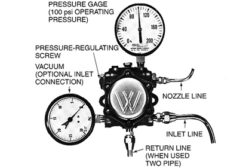Home » Keywords: » oil heat furnace
Items Tagged with 'oil heat furnace'
ARTICLES
Oil Furnace Shipments on the Rebound in 2015
Shipments increase for the second consecutive year
Read More
Oil Furnaces Require Special Care
Regular Maintenance Can Maximize Efficiency and Increase Longevity
Read More
Copyright ©2024. All Rights Reserved BNP Media.
Design, CMS, Hosting & Web Development :: ePublishing









